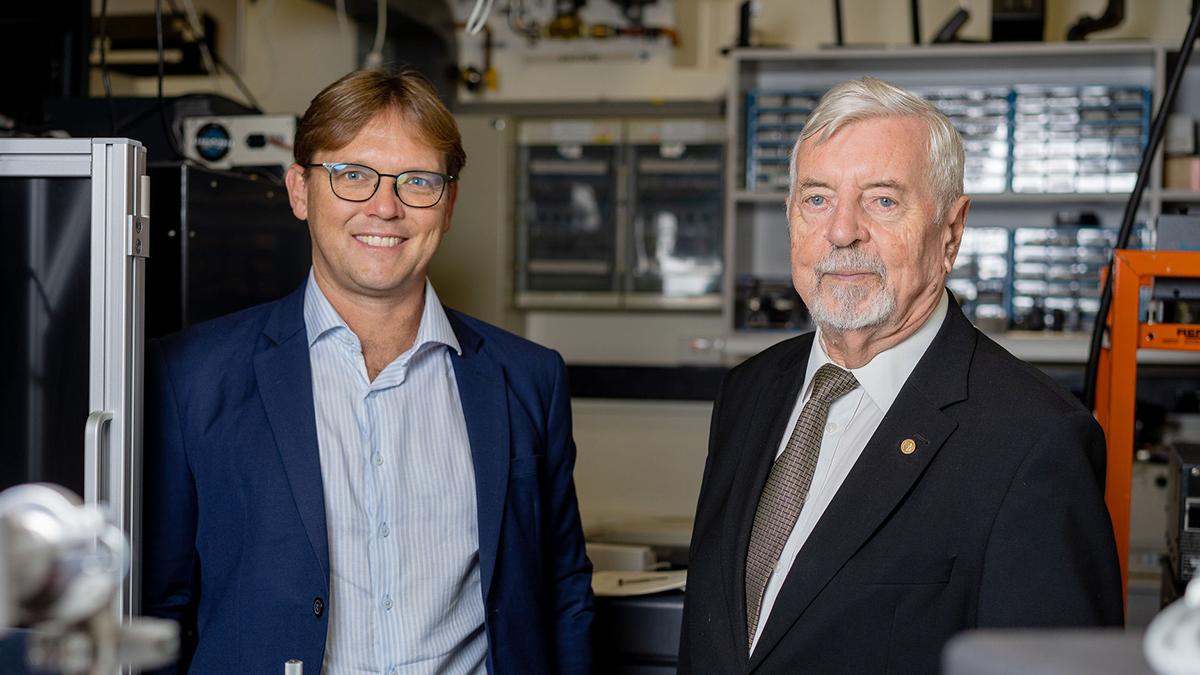Australia’s first fusion energy company HB11 Energy has demonstrated a world-first ‘material’ number of fusion reactions by a private company, producing ten times more fusion reactions than expected based on earlier experiments at the same facility.
HB11 Energy’s world-first results were published in the peer-reviewed scientific journal, Applied Sciences, and demonstrate non-thermal fusion of hydrogen and boron-11 using high-power lasers.
This approach was predicted in the 1970’s at UNSW by Australian theoretical physicist and HB11 Energy co-founder, Professor Heinrich Hora, and differs radically from most other fusion efforts to date that require heating of hydrogen isotopes to millions of degrees.
Accordingly, the demonstration overcomes this technical hurdle that has held the field back for decades and prevented most other fusion companies from demonstrating any fusion reactions.
The experiment was a collaboration involving many of HB11 Energy’s growing list of international academic partners, and was led by HB11 Energy Lead Scientist Dimitri Batani and collaborator Daniele Margarone.
The results position HB11 Energy one huge step closer to creating clean, safe, and reliable energy at better prices and in greater abundance than all existing renewable energy sources combined.
Dr Warren McKenzie, Founder & MD of HB11 Energy, says: “The demonstration of fusion reactions alone is incredibly exciting. But on top of this, the unexpectedly high number of reactions additionally gives us important information about how to optimise our technology to further increase the fusion energy we can create.
“Creating this fusion energy will achieve wonders in the way of safe, clean, and abundant energy for the whole world.”
For nuclear fusion to have commercial applications, it must create a net energy gain whereby the energy output of a reaction significantly exceeds the energy input required to catalyse it.
HB11 Energy’s research demonstrated that its hydrogen-boron energy technology is now 4 orders of magnitude away from achieving net energy gain when catalysed by a laser. This is many orders of magnitude higher than those reported by any other fusion company, most of which have not generated any reaction despite billions of dollars invested in the field.
The results show great potential for clean energy generation: hydrogen-boron reactions use fuels that are safe and abundant, don’t create neutrons in the primary reaction so cause insignificant amounts of short-lived waste, and can provide large-scale power for base-load grid electricity or hydrogen generation.
However, the project was performed at the LFEX petawatt laser facility at Osaka University in Japan due to a lack of a local high-power laser facility, meaning Australia has a long way to go in creating sovereign capability in this critical industry, according to HB11 Energy.
Dr Warren McKenzie continued: “These findings take us one step closer to creating clean, safe, and reliable energy at better prices and in greater abundance than all the existing renewable energy sources combined.
“Our unique approach to large-scale clean electricity generation uses an aneutronic fusion reaction between hydrogen and boron-11 that does not use any radioactive fuels or generate uncontrollable radioactive waste.
“Achieving this on a large scale would be a gamechanger, but to do this locally we will need significant investment in our sovereign capability, including having a petawatt laser in Australia.”
HB11 Energy’s result comes only days before the National Ignition Facility (NIF) published a demonstration of a fusion burn after more than a decade of research at the multi-billion dollar US Government-funded Lawrence Livermore National Laboratory.
This result has major implications for HB11 Energy as it is also a laser-driven fusion effort, albeit NIF uses radioactive fuel capsules that are highly engineered and may not be practical for energy generation.
With HB11 Energy being the only commercial entity to achieve Hydrogen Boron fusion so far, it is now the global frontrunner in the race to commercialise the holy grail of clean energy.
On the back of this result, HB11 has also recruited Ellen Gorissen as General Manager: Commercial, who was formerly the Investment Director at IP Group and Head of Commercialisation at CSIRO, to run a new Series A funding round that has just commenced.
Read the results in full: In-Target Proton–Boron Nuclear Fusion Using a PW-Class Laser article
Featured Image caption: HB11 Energy co-founders Dr. Warren McKenzie (left) and Professor Heinrich Hora (right)

